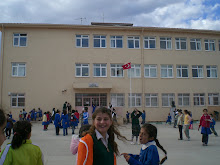
Zeybek
In this Aegean dance, colorfully dressed male dancers, called "Efe", symbolize courage and heroism.
The Zeybek folk dance of Turkey differs in style depending upon the region. The speed of the movements can be fast or slow, but they all have 9 slow beats. This odd number of beats gives the Zeybek a distinctive rhythm not seen in other types of musical dance. The name of the Zeybek hails from the people who originated it. These people were the Zeybeks - warriors who lived in the mountainous regions of Turkey. The dance they performed mimicked the motions of hawks. This fluid form of movement later evolved into the Zeybek folk dance which is still performed in many regions of Turkey today. The gender of the dancers also makes a difference in how it will be performed. With all male dancers, there is a brief freestyle period before the rhythmic section of the Zeybek. When the participants are all female, there is no free movement period before the actual dance.
The Zeybek folk dance of Turkey differs in style depending upon the region. The speed of the movements can be fast or slow, but they all have 9 slow beats. This odd number of beats gives the Zeybek a distinctive rhythm not seen in other types of musical dance. The name of the Zeybek hails from the people who originated it. These people were the Zeybeks - warriors who lived in the mountainous regions of Turkey. The dance they performed mimicked the motions of hawks. This fluid form of movement later evolved into the Zeybek folk dance which is still performed in many regions of Turkey today. The gender of the dancers also makes a difference in how it will be performed. With all male dancers, there is a brief freestyle period before the rhythmic section of the Zeybek. When the participants are all female, there is no free movement period before the actual dance.






